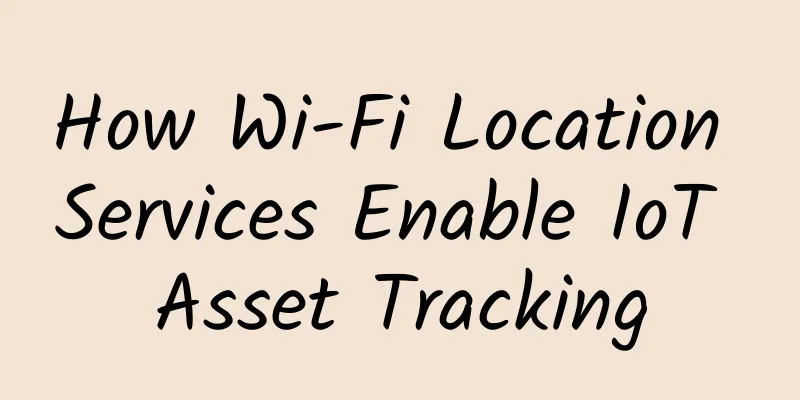How Wi-Fi Location Services Enable IoT Asset Tracking

|
To locate IoT devices, you need a wireless communication network. Most IoT tracking systems rely on GPS or cellular location services for this connection. Unfortunately, these technologies have some drawbacks for enterprise asset tracking systems.
In this article, we'll explain how traditional Wi-Fi location services work. But we won't stop there. Once you understand the basics, we’ll introduce an innovative approach to asset tracking via Wi-Fi location services. At Troverlo, we’ve patented a new approach to providing reliable, affordable, and secure data about the location of your assets, wherever they are in the world—all by turning Wi-Fi location systems on their head. How Wi-Fi Location Services WorkWi-Fi Location Services works on the same principle as GPS or cellular location tracking: triangulation. To locate a device using triangulation, you need at least three "nodes" that the device can detect, such as cell towers, satellites, or Wi-Fi access points. The signal strength between the device and the node tells the positioning system how far apart the two objects are, but it cannot specify a direction. This creates a circle of possible locations, equidistant from the central node. Troverlo However, if you have at least three nodes, the circles will overlap in one area. A device that detects all three nodes will definitely be somewhere in the overlap. Troverlo In GPS, satellites are nodes. In cellular triangulation, cell towers are nodes. In Wi-Fi location services, the nodes are the billions of Wi-Fi access points around the world. How to Improve the Accuracy of Wireless Network Database Companies that use Wi-Fi location services in their products (think Google, Facebook, and many lesser-known digital operators) maintain massive databases of Wi-Fi access points. They collect data about the strength and identity of each Wi-Fi signal, compiling a unique “Wi-Fi fingerprint” for each access point. These companies also continually update these databases to reflect the ever-changing Wi-Fi landscape. Use Wi-Fi positioning systems for location tracking and data collection How does Troverlo leverage the Wi-Fi ecosystem to deliver cost-effective, accurate, and secure services? Our patented technology first configures the asset to be tracked to behave like a Wi-Fi access point.
Use cases for tracking IoT assets via Wi-Fi location servicesWho benefits from Wi-Fi asset tracking services? Here are some example use cases for the technology we just covered:
By leveraging existing decentralized infrastructure, this innovative Wi-Fi tracking system minimizes costs while increasing accuracy and reliability. If you need to track assets—including inexpensive devices that previously didn’t seem worth tracking—Wi-Fi asset tracking may be the solution you’re looking for. |
<<: What are the layers of the TCP/IP network model?
>>: After 4 years, 5G has blossomed
Recommend
QuantumCore: Australian VPS 1 AUD per month for the first three months, 1G memory/30G NVMe hard drive/1TB monthly traffic
The tribe once shared information about QuantumCo...
Wireless Broadband Alliance: Wi-Fi 6/6E adoption will reach 83% by 2022
[[429983]] A key finding from the latest cross-in...
What Internet speed do smart homes need?
The Internet of Things (IoT) is changing the way ...
The next generation of live broadcast solution is here, this is how e-commerce live broadcasts should be played in the future!
On August 6, Huawei's online seminar (Huawei ...
After 5G, there will be no more "operators", what do you think?
As the name implies, the core capability of opera...
Unleashing the Potential of Connections 2018 Huawei Network Innovation Technology Forum Launched in Beijing
[51CTO.com original article] In recent years, in ...
"Vanity" is updated: Huawei's distribution market is booming
In the development history of China's ICT mar...
2017: China's first robot firewall launched a powerful attack to break the curse of black production and enhance the security future of online business!
[[188847]] The rise of the digital economy has ma...
Megalayer: 20% off on Hong Kong Alibaba hybrid servers - E3-1230/8GB/240G SSD/10M omnidirectional + 10M Alibaba Cloud bandwidth starting from RMB 638/month
This month, Megalayer provides Hong Kong Alibaba ...
Double 11 Carnival, drink this bowl of "traffic control" soup
[[350322]] As the Double 11 shopping festival app...
5 must-have software tools for software-defined storage
When considering storage and management of a comp...
What process resources are shared between threads?
[[357394]] Processes and threads are two topics t...
Message bus for communication between processes
[[381755]] 1. Inter-process communication (IPC) in...
If operators want to make profits, they should eliminate 4G packages first.
[[346837]] After 2019, the first year of 5G, and ...
Experience the Serverless application programming model in cloud native scenarios
background Alibaba Cloud Serverless Kubernetes (A...









